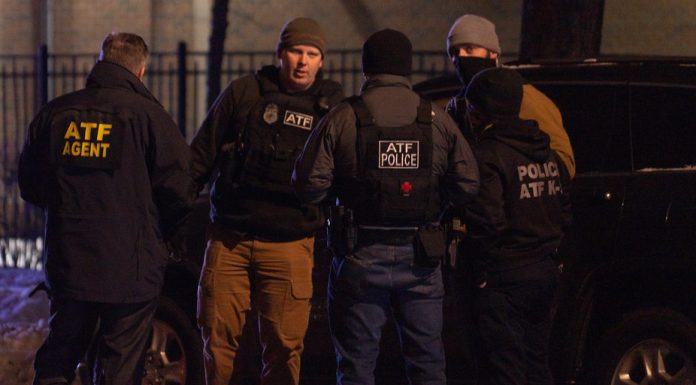(Brett Cooper, Foundation for Economic Education) The Bureau of Alcohol, Tobacco, Firearms and Explosives has published a notice outlining their plans to update regulations on stabilizing braces.
Originally developed to help those with disabilities shoot comfortably, stabilizing braces have become a popular firearm accessory used to legally adapt AR-style pistols into guns that can be shot from the shoulder, like the highly regulated short-barreled rifle.
According to the ATF, stabilizing braces will now have to conform to a set of stringent guidelines to be considered legal. If they don’t meet those standards, they—and the gun to which they’re attached—will automatically become regulated as a rifle under the National Firearms Act.
This isn’t the first time the ATF or the DOJ have attempted to regulate this popular accessory. A similar reclassification was proposed back in December, but it was shot down due to uproar from lawmakers and the firearm community. However, after pistol-braced firearms were used in two recent, high-profile mass shootings, the ATF has circled back to the issue and seems more motivated than ever.
Immediate Pushback
After the ATF notice was published, more than 130 representatives penned a letter to the agency and called upon the bureau to withdraw the rule, stating that the “proposed guidance is alarming and jeopardizes the rights of law-abiding gun owners.”
Most importantly, the lawmakers reminded the ATF that for the last decade, it had asserted that there were legitimate uses for stabilizing braces, as the accessory was designed to aid disabled gun owners who enjoy recreational shooting.
“Should this guidance go into effect,” they wrote, “a disabled combat veteran who has chosen the best stabilizing brace for their disability is now a felon.”
In response, the ATF claimed that this new classification won’t impact braces designed to help those with disabilities. However, their proposed point-based worksheet of stabilizing brace criteria fails to make this clear for gun owners.
Intentionally Complicated?
At 52 pages, the intricate proposal is so lengthy and establishes such specific requirements that law-abiding citizens will have no idea if their firearm is still legal.
“Certain prerequisites,” the proposal reads, such as weapon weight and the overall length, “will be applied to determine if the firearm will even be considered as a possible pistol or immediately determined to be a rifle.”
Furthermore, “design factors that are more likely to demonstrate a manufacturer’s … intent to produce a ‘short-barreled rifle’ and market it as a ‘braced pistol’ accrue more points than those that reveal less evidence.”
A stabilizing brace that has accumulated too many points based on these criteria will be deemed a rifle, and therefore unlawful. Not only is this formula complicated, but there seems to be another hitch.
“The new factoring system,” remarks the NRA-ILA, “seems designed to ensure that few, if any, firearms can meet the criteria.”
Therefore, by classifying these braced pistols as Short Barreled Rifles, one of the most highly regulated guns on the market, the federal government is forcing 10-40 million law-abiding gun owners to surrender, destroy, or register their legal firearms … or face felony charges.
Avoiding Centralized Power
Essentially, the ATF is able to add rules and reclassify weapons without holding a single vote in Congress. As a result, this significant assault on the Second Amendment will not receive its due process.
This is a conspicuous confiscation of power, and it’s precisely what America’s founding fathers strove to avoid through the establishment of checks and balances.
The Constitution’s authors designed the United States government as three separate branches: the legislative, judicial, and executive. The legislative creates laws, the judicial determines their constitutionality, and the executive implements them.
In certain scenarios, each branch has the power to override the others and ensure that no branch of government is able to hold too much centralized power.
Unfortunately, through its unilateral proposal that would impact tens of millions of US gun owners, the ATF is violating the Separation of Powers designed by the Constitution to limit government overreach and protect individual rights.
A Timeless Warning
In Federalist No. 48, James Madison warned that “the accumulation of all powers, legislative, executive, and judiciary, in the same hands, whether of one, a few, or many, and whether hereditary, self-appointed, or elective, may justly be pronounced the very definition of tyranny.”
This is exactly what is happening today.
This stealth power grab should concern all Americans, even if they are outside the immediately-impacted gun community…Original Source…

